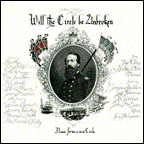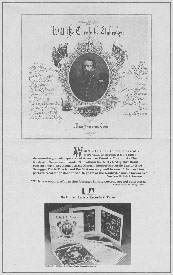- Home
- Introduction, Update Information, Links
- The Super Seventies "Classic 500"
- Readers' Favorite Seventies Albums
- Seventies Single Spotlight
- The Top 100 Seventies Singles
- Favorite Seventies Artists In The News
- Seventies Almanac - Year By Year
- Seventies Singles - Month By Month
- Seventies Albums - Month By Month
- Seventies Daily Music Chronicle
- Seventies Superstars In Their Own Words
- The Super Seventies Archives
- Seventies Trivia Quizzes & Games
- Seventies MIDI Jukebox
- The Super Seventies Bookstore
- The Super Seventies Photo Gallery
- Seventies' Greatest Album Covers
- Popular Seventies Movies & TV
- Seventies Celebrity Portrait Gallery
- Seventies Lyrics Hit Parade
- Top Seventies Artist Music Videos
- Seventies Usenet Music Forums
- Seventies Smiley Calendar
- EXTRA!
- Superseventies.com Facebook Page
- Superseventies.com Reddit Discussions
- The Super Seventies Blog
- Tweet The Seventies
- RockSite InfoBank
- Beatlefan Site
- Thanks For Your Support! / Top Sellers
- Search The Rock Site/ The Web

Will The Circle Be Unbroken
Nitty Gritty Dirt Band
United Artists 9801
Released: October 1972
Chart Peak: #68
Weeks Charted: 32
Certified Gold: 5/25/73
Three discs, thirty-six songs, a scattering of grey eminences already enshrined in the Country Music Hall of Fame, two inventors of important guitar styles, the best banjo picker in the world -- it is to United Artists' credit that they didn't name it Everything You Ever Wanted to Know About Traditional Country Music... *But Were Afraid to Ask. What they did name it is Will the Circle Be Unbroken, with a note on each disc's label that adds, "Featuring the Nitty Gritty Dirt Band.
Well, yes... I suppose it does feature the Nitty Gritty Dirt Band -- it features them being respectful and staying out of the way of the cropped-hair Country Giants who dominate the album: Roy Acuff, Earl Scruggs, Doc Watson, Merle Travis, Maybelle Carter, Jimmy Martin, and the late Junior Huskey. One Nitty Gritty, though, Jimmie Fadden -- is not at all bashful (would that he were, sometimes) about playing his harmonica in the thick of things. The unsung "featured" attraction is the organizational talent of the Dirt Band's manager, Bill McEuen, who rounded up the Giants. Getting Acuff, the King of Country Music, to go along with it was key, I'm told.
Accordingly, it is impossible to guess what effect this enormously ambitious recording project will have on the upsy-downsy career of the Dirt Band. Fine musicians, they have been hampered mostly by their indecision about whether to be a jug band, a rock band, a country band, or something else. The Dirt Band's reputation in rock, such as it is, will no doubt expose the country stars to some segment of a young, "new" audience, which is good, and it may or may not give the Dirt Band a more positive sense of direction.
Art, as they say, justifies itself in any case, and this big package has untold sentimental value on top of its artistic worth. Who in the blue-eyed world, for example could be objective enough to say whether Maybelle Carter does "a good job" singing "Wildwood Flower"? These are our roots, man -- A. P. Carter himself wrote that tune, and that woman with the sad, draggy voice, the autoharp, and the Gibson guitar that sounds bigger than a double-bass is the mother of us all. Besides, this is a first (they're always nice): the first time Maybelle ever recorded that song with the autoharp instead of the guitar. We know that much because much informal talking that went on between takes is left on the records -- I tell you this McEuen is a sharpie. What else is there to say? Nice shot, Bill McEuen. You done all right.
- Noel Coppage, Stereo Review, 3/73.
Bonus Reviews!
A public service by what is ordinarily a fairly weak-minded folk-rock aggregation, this three-record set unites six great traditional country singers -- Mother Maybelle Carter, Earl Scruggs, Doc Watson, Roy Acuff, Merle Travis, and Jimmy Martin (of Bill Monroe's Bluegrass Boys) -- with old-time material so tried and true that even this unreconstructed urbanite has heard most of it before. But rarely with such easy pleasure. All of the obvious pitfalls -- uninspired performances, schlocky backup, arty or arbitrary programming, and of course folkie irrelevance -- are avoided, and if the set is never definitive, it's an instant classic nevertheless, an intensely aggreable way into mountain music. As for the Dirt Band, Jimmy Martin was so impressed with their alertness that he offered to hire them, and I'm sorry they didn't take him up on it. A-
- Robert Christgau, Christgau's Record Guide, 1981.
The influence of this two-disc set, which brought the previously pop-oriented Dirt Band together with some of the seminal names in country music, is incalculable. Mother Maybelle Carter, Earl Scruggs, Doc Watson, Roy Acuff, and others sat down with a bunch of longhairs, found common ground on the best of old-time country music, and changed the direction of popular music. Two decades on, it still sounds great.
- William Ruhlmann, The All-Music Guide to Rock, 1995.
Will the Circle Be Unbroken is the hands-down must-own release by the NGDB, although it's not as much a reflection of the band's own music as it is a testament to its roots. The music was already old by 1972 but sounded fresh in this context. And it hasn't aged in the quarter-century since. * * * * *
- Gil Asakawa, Musichound Rock: The Essential Album Guide, 1996.
Decades before O Brother, Where Art Thou?, this Survey's top-rated Country & Western album, a three-disc landmark, pulled out all the bells and whistles, bringing folk and hill music to the masses by pairing young Dirt Band pickers with a breathtaking supporting cast of traditional C&W stars, including Roy Acuff, Maybelle Carter and Doc Watson. Giving new life to old material, the bluegrass classic is a great scrapbook of Americana that stands the test of time. * * * * *
- Zagat Survey Music Guide - 1,000 Top Albums of All Time, 2003.
This momentous album was conceived by NGDB manager, Bill McEuen, who wanted the country-rock band to be taken more seriously by their label. Without asking for a budget, he booked a Nashville studio and invited legendary local luminaries like Roy Acuff, Mother Maybelle Carter, Earl Scruggs, Merle Travis, and Doc Watson, as well as such revered pickers as Vassar Clements on violin and Norman Blake on dobro, to become part of this ambitious project.
The plan worked: this became the band's first gold album, although -- curiously -- on some tracks, such as "Cannonball Rag," "Wabash Cannonball," and others, none of the group members are credited as participating! That said, for anyone interested in great country songs by the likes of Hank Williams, A.P. Carter, Scruggs, and Travis played in authentic bluegrass style, this album can hardly be bettered. The relaxed atmosphere resulted in some superb performances, and consistently high quality. Moreover, the combined talents of the NGDB and their revered guests attracted sales from both old-time country aficionados, and younger country-rock fans.
The Nitty Gritty Dirt Band is still active -- four of the members who played on this album feature on their latest (2004) offering. The band has also released two subsequent sequels -- Volume 2 in 1989 and Volume 3 in 2002, featuring many of the same luminaries.
- John Tobler, 1001 Albums You Must Hear Before You Die, 2005.
Just before starting "The Precious Jewel," one of the dusted-off standards on this unusual cross-generational summit meeting, veteran singer Roy Acuff tells his younger accompanists, the Nitty Gritty Dirt Band, about a long-standing policy he follows in the recording studio. "Once you decide you're going to record a number, don't say 'Oh, we'll take it over and do it again,'" Acuff says in one of several moments of priceless studio chat between tracks. "Because every time you go through it, you lose a little something."
It's unlikely that all of the thirty-seven tracks on this triple album were first takes. But an astonishing number of them have that first-take feeling. In one of the most unusual musical apprenticeships of the rock era, the Nitty Gritty Dirt Band invited country and bluegrass legends to spend time in the studio, sharing songs and traditions. The guests included Mother Maybelle Carter (who plays "Keep on the Sunny Side" on autoharp!), Merle Travis, banjo master Earl Scruggs, Acuff, and others. Also invited were younger, lesser-known musicians -- this record established Vassar Clements as a profoundly melodic (an surprisingly versatile) fiddler.
The host band was attentive to the veterans -- unlike the many rock figures then grafting country earnestness onto electric backdrops, these guys wanted to do the songs the "right" way, and they sought not just the lines but the magical little embellishments between them. The reverence is audible. Respect flows in both directions, as the mythic "circle" that stretches back to the Carter Family remains unbroken.
- Tom Moon, 1,000 Recordings To Hear Before You Die, 2008.
![]() Reader's Comments
Reader's Comments
No comments so far, be the first to comment .
![]() Main Page
| The Classic 500
| Readers' Favorites
| Other Seventies Discs
| Search The RockSite/The Web
Main Page
| The Classic 500
| Readers' Favorites
| Other Seventies Discs
| Search The RockSite/The Web




